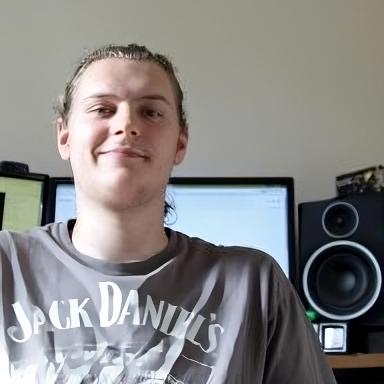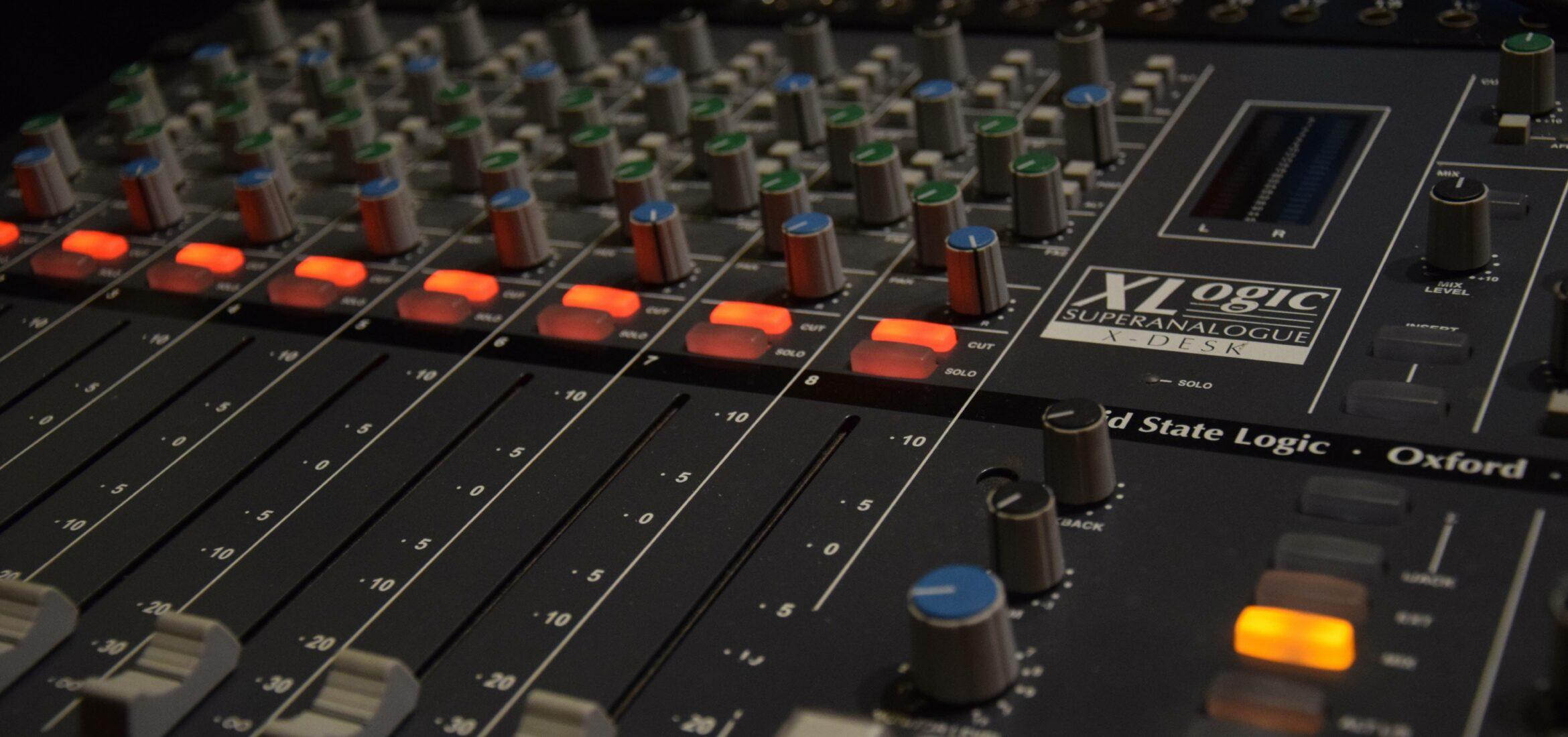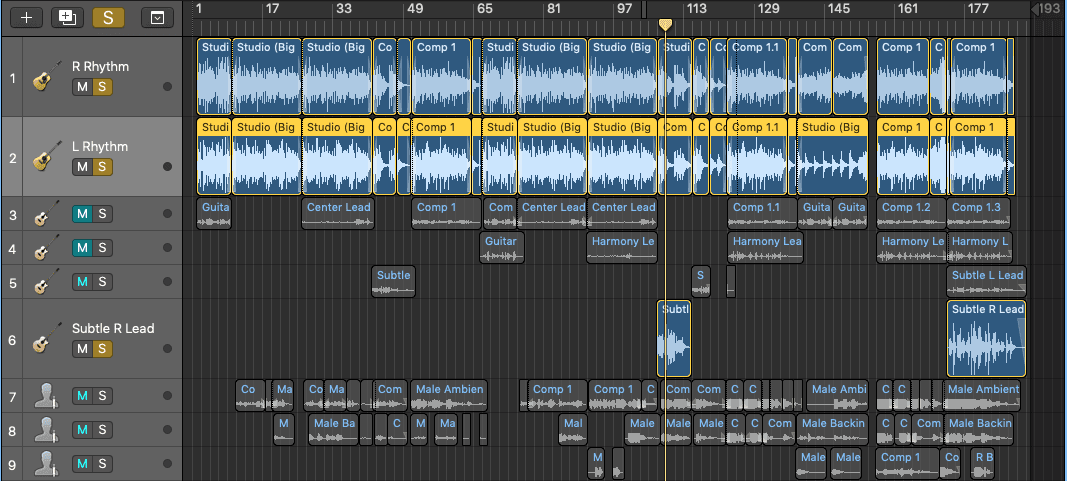In the analogue recording world, engineers make the most of as many bits of outboard gear as they can. From preamps to compressors, almost every sound is run through a piece of equipment that gives it a certain unique tonal flair. It’s this colouring process that breathes life into music and is the reason that most commercial music sounds so incredibly clear and powerful. For most electronic music producers, everything is done in the box. Perhaps for a few hardware keyboards or samplers, most of the production and mixing is done in your DAW and so it is never subjected to the wonderful things that physical circuitry has to offer. Today, we’re going to look at audio summing and all the different ways that it can be done. Hopefully, this will provide you with some ideas, some good studio gear to buy, and help to step your music up to the next level!
Digital Audio Summing (ITB)
When we talk about digital audio summing, we’re referring to the process that goes on in your DAW. This process is often referred to as ITB or In-The-Box as all of the work is done inside your computer. For many home producers or electronic musicians, this is the most common method for audio summing. Each of the channels inside your DAW is routed to the same output, being your master channel, which is then sent out to your studio monitors. This is simple in its design and is automatically the default in any DAW. Unfortunately, mixing ITB can have its issues and can also be one of the key reasons that your music doesn’t sound quite right, even when you know your mixing is correct.
ITB Issues
One of the first issues that mixing ITB can cause is poor spatial imaging. Due to the way panning laws are applied in some DAWs, the amount of attenuation applied to signals deemed mono can be a little lacklustre, thus creating a more centred mix. With a desk, the use of components to physically separate channels can create a more balanced stereo mix. Some desks can also impart certain characteristics onto the sound, through their circuitry, which helps to create a rounder and generally nicer sound which can be perceived as sounding wider.

Another issue that audio summing ITB presents is the limitations of analogue to digital converters. When your entire mix is being sent to the monitors via one stereo D/A, it’s generally going to have to work that much harder to process all of the signals that are being fed into it. This isn’t to say that they aren’t up to scratch as anybody that owns an interface will know that they work just fine. However, when you’re using analogue desks or audio summing boxes, you can generally dedicate a D/A converter to every channel you send out. This means more clarity and better processing of a much smaller signal. The converter can focus on all of the low-level detail, subtle nuances, and complex transients that are within the signal.
ITB Isn’t All Bad
Despite this point, it is worth mentioning the end user. Although ITB mixing only uses one converter, most of your audience is going to be listening with only one. This means that you’re listening to the audio the same way your audience will be. In fact, working ITB and bouncing to your hard drive means your audio doesn’t physically pass through any converters. This only happens when it is played back. Remember that the premise of this article is what audio summing can add to your music. Even when we sum through a desk and use multiple converters, we still eventually bounce to our hard drives. The file doesn’t pass through another converter until playback. Try to think about these summing options as another element of mixing, an effect or process that you can add-in. The same concept applies if you work with a digital mixer connected to your computer although is not strictly «in-the-box».
Analogue Audio Summing (OTB)
So now we’re on to the analogue world. Here, we are talking about analogue desks as well as hybrid desks that allow us to send the audio in our DAW out onto individual channels which we can balance, pan, and apply other audio effects too. The great thing about analogue summing is not only the introduction of the character we get from the desk’s circuitry but the fact that we can now utilise outboard equipment to further improve and colour our mixes.
Analogue desks can range from small 16 channel affairs offering you the basic ability to EQ, pan and level your audio all the way up to 64 channel behemoths that offer bus compression, gating and audio limiters as well. Obviously, these can be insanely expensive and far too large for the average home studio but you can definitely still find small, well-priced options that will impart some character in your mixes.

Learning to mix OTB is a fantastic experience that allows you to be so much more hands-on with your music. It’ll add a whole new level of presence and flair to your mixes without you needing to do anything. It will also let you get far more specific with the balance of mixes as the control is that much greater. You can get away from the screen and really focus on your ears, making tiny tweaks that really open up your mixes.
Analogue Summing Boxes
Analogue summing boxes are similar to what we achieve from using analogue desks. However, they are much smaller, much cheaper and much simpler to use. Instead of having a digital master, we use an analogue audio summing box OTB whilst still working in our DAW. How? You may ask. Well, the summing box works the same as a desk. You can hook up multiple outputs to it, channel by channel. But instead of then using our analogue device to mix, we just use it to pass the audio signal. Two outputs are sent from the audio summing box, one to the monitors and one back into your DAW. This is so you can listen and also record the final mix back into the digital environment.
This really gives us the best of both worlds. We get that wonderful analogue circuitry sound, providing warmth and body to the mix. We also get the addition of multiple D/A converters, each focusing on individual elements. On top of this, we get to work in our familiar DAWs. We can use the best VSTs and automation like normal AND analogue summing boxes are almost always cheaper than desks! It’s really the perfect setup for an audio summing setup. Devices such as the Dangerous Music 2-BUS+ allow you to hook up 16 mono channels or 8 stereo channels and monitor as if you were working on an analogue desk. The Tegeler Tube Summing Mixer offers you up to 32 mono channels as well as the beautiful tube sound that we all crave so badly. It’s also been designed to cascade so you can extend the number of channels you can work with.
Tape Decks

Finally, I want to touch on audio summing to tape. This could be a dedicated multi-track tape desk, a 2 channel or even a cassette deck. Routing your channels out to a tape deck and back, much like our audio summing box, is also a great way to add some colour and character to your mixes. It’s slightly more cumbersome than a desk or an analogue summing box though. You will need to constantly record to tape, wind it back and then print the mix into your DAW. However, it can make for a great sound and is well worth the hassle.
This is especially true if you’re going for a certain sound. Many old-school hip-hop tracks that I mix get the cassette treatment. It provides a fantastic amount of thickness and glue, gently squashing and clipping the peaks whilst reinforcing the low end. It’s a total aesthetic makeover for the music and is often that ah-ha moment for many of my clients. If you’re looking for a way to branch out of digital audio summing, working with tape is great. It’s an easy and cheaper way to do it.
Audio Summing Done Cheap
So now we’ve discussed the different types of audio summing. Those are all the crazy expensive options you can utilise to make your music sound better. I guess you’re probably wondering how you can afford any of this? If you’ve got a good job or a few bucks saved away, great. You might just want to go out and buy a desk or a summing box. If however, you’re not that lucky, I have some suggestions for what to do next.

Just like subscription services for drum samples, there are online services that offer things like analogue audio summing and tape summing for a fixed fee per track. Sites such as analogsumming will run your track through their world-class Neve desk to give it a fantastic sense of warmth and depth that you might have been missing ITB. Equally, sites like Fiverr offer gigs where people can record your tracks on fantastic reel to reel tape decks and then send them back to you, giving them a bit of tape compression and warmth. These options will let you get that analogue quality without breaking the bank. Equally, they let you trial the concept and hear what it sounds like before you commit to buying any gear.
TL;DR
In the audio world, there are a few different ways that we can do audio summing. The most common concept is digital summing in your DAW. This is great as it’s easy to control and allows you to quickly make changes and add things like automation. Unfortunately, it does have its limitations and doesn’t always sound as warm and as full as professional, commercial music.
Analogue summing lets you work out of the box and mix on a desk. It’ll allow you to dial in the physical character of electronic circuitry and components like tubes and transformers. A simpler and often cheaper option to this is to use an analogue summing box. This allows us to work in our DAW but hear our audio through an analogue summing device. It’s the best of both worlds. Finally, we can utilise tape for audio summing to add glue and warmth, although it can be quite time-consuming. In order to make use of these methods if you don’t have the money, make use of online services. These will offer various types of summing for a small fee.
Sobre el autor

Tim Dunphy
Ingeniero de sonido y redactor de contenidos especializadosMás de 10 años de experiencia trabajando en el sector del audio. De todo, desde enrollar XLR hasta masterizar álbumes. Soy un hombre hecho a sí mismo y mantengo mis activos en Bitcoin. ¿Qué más hay que saber?
Deja un comentario
Entrar para comentar


